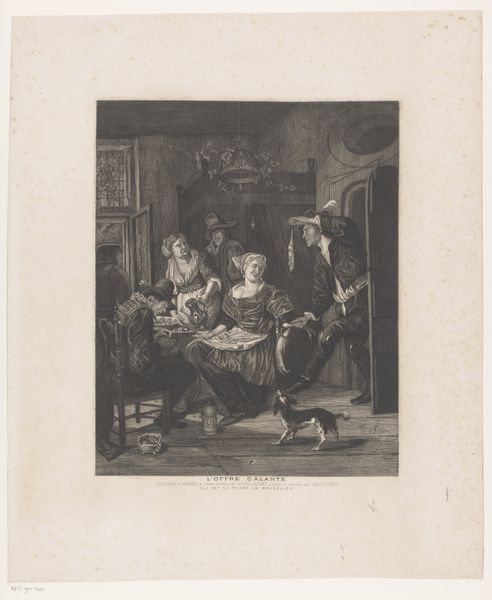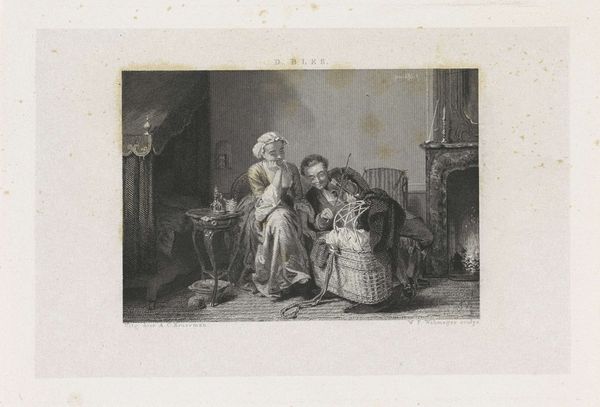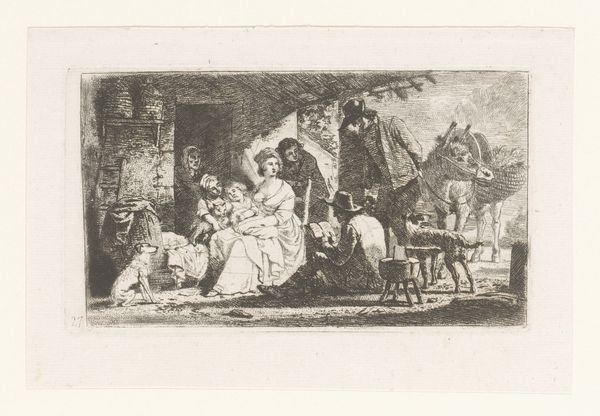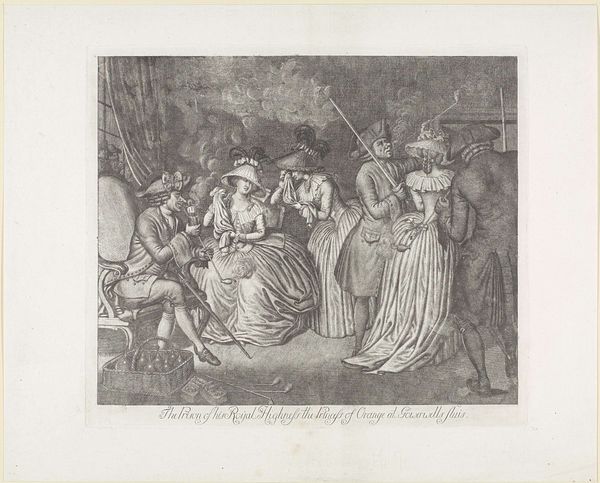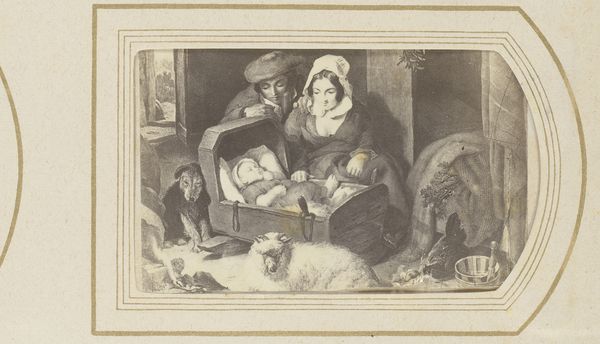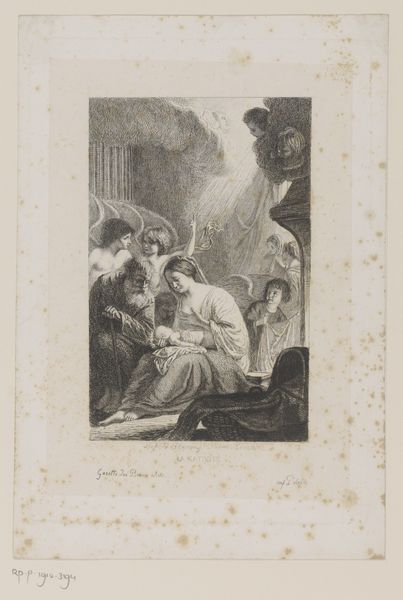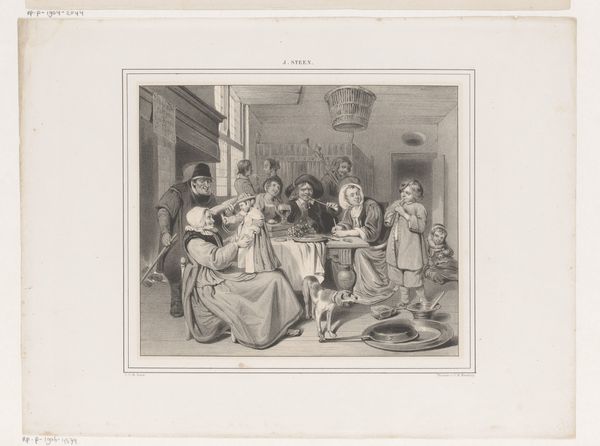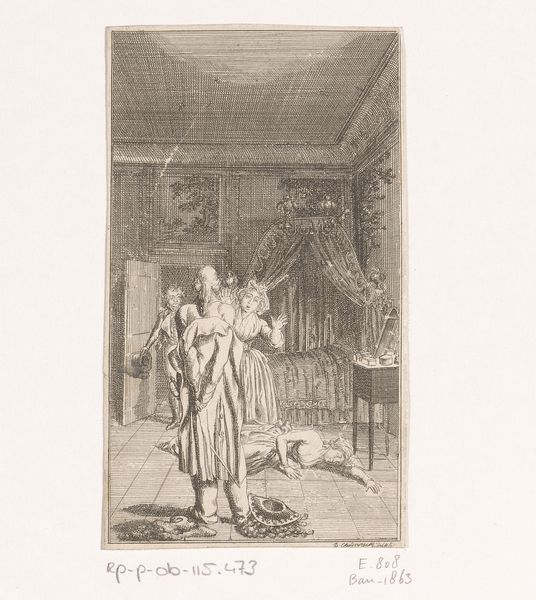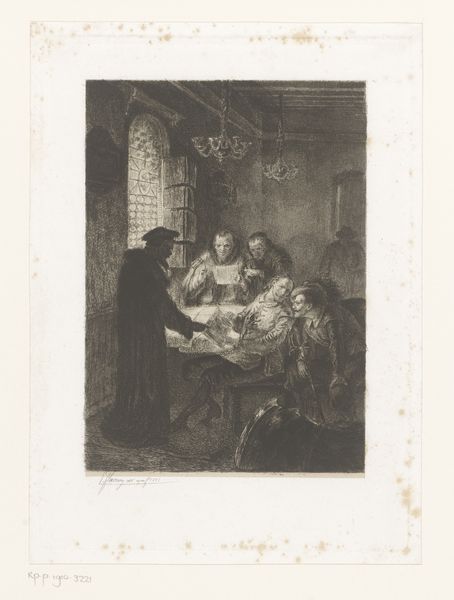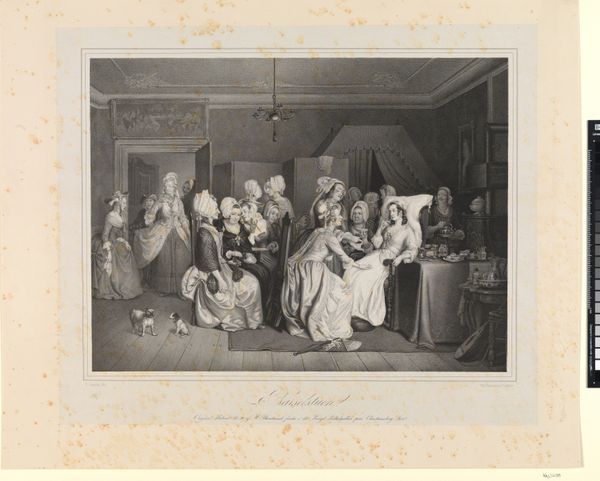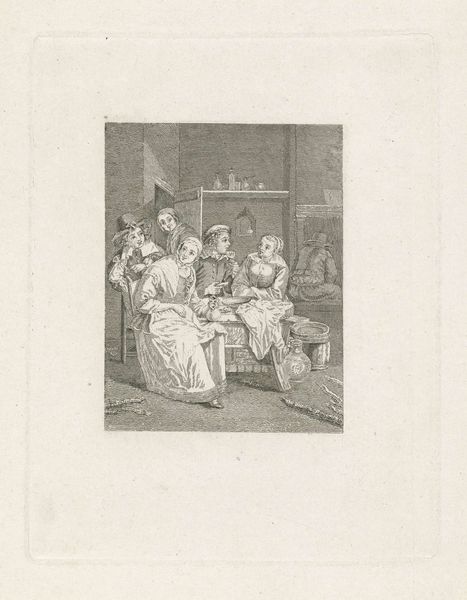
Dimensions: height 260 mm, width 343 mm
Copyright: Rijks Museum: Open Domain
Editor: This etching, "Zoals de ouden zongen, zo piepen de jongen" – or, "As the old sing, so the young chirp" – was made between 1888 and 1891 by Willem Steelink. There is so much happening here. It feels very theatrical and detailed. What do you see in this work? Curator: I see a clear engagement with genre painting traditions and the social function of art. The artist is presenting a proverb through a very staged, constructed scene. Where do you think this places the work within the artistic landscape of the late 19th century? Editor: I suppose, being a genre scene referencing an old saying, it suggests an interest in the past, perhaps even nostalgia for it? Was it common for artists to reference proverbs or sayings in this way at the time? Curator: Precisely. Artists often used these familiar sayings as a vehicle to comment on social structures or moral lessons. Consider how the institutional settings – exhibitions, art academies, the market – would shape the production and reception of such a work. Who do you think was the intended audience for this piece, and how would its meaning be interpreted in the late 19th century? Editor: The details feel quite lavish for what I'd imagine would be regular people, so maybe it was made for the upper classes? Perhaps a critique of family dynamics and tradition from the outside, since they probably knew the proverb already? Curator: Indeed! And given the title's theme of intergenerational influence, think about the power dynamics being visually represented, not just within the family, but also within artistic institutions and traditions. The artist is playing with established tropes while perhaps subtly critiquing the societal expectations tied to them. What strikes you most about how this scene reflects the proverb? Editor: The theatricality of the whole thing, how deliberately posed everything seems. It feels less like a snapshot and more like a commentary. I never considered how artworks are so tied to their time and the artistic ecosystem around them. Curator: Exactly! Thinking about art history means looking beyond just the image itself, into how society and its institutions shape what we see, how we understand it, and its role within cultural dialogue.
Comments
No comments
Be the first to comment and join the conversation on the ultimate creative platform.
